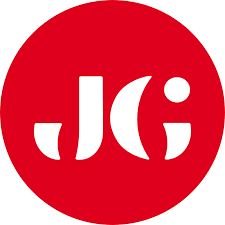“Data-Driven Thinking” is written by members of the media community and contains fresh ideas on the digital revolution in media.
Today’s column is written by Will Braithwaite, marketing manager at Jun Group.
Banner ads were enjoying a happy retirement after their heyday in the ’90s and 2000s. That all changed around 2019, when brands and app developers revitalized the antiquated ad format. Since then, mobile banner ads have made a major comeback.
The sheer volume of requests spurned by programmatic mediation have catapulted them back into the ad tech spotlight. Why? Well, it’s one of the rare ad formats that both brands and app developers love.
Brands love simplicity and affordability
For a decent stretch of the 2010s, marketers cared almost exclusively about their campaigns’ reach and engagement. If an ad was viewable, collected enough eyeballs, and drove engagement, then marketers were happy. Sales lift? Return on ad spend? Those would be great, but let’s get real. This is digital advertising; we can’t guarantee that.
Around 2019, marketers wised up. Brands across every vertical began expecting concrete results from their marketing efforts. Who cares if 50,000 people saw my ad? How many people actually purchased the product?
Enter banner ads.
Well, technically, reenter banner ads. Banner ads had been a tool in marketers’ toolkits since the ’90s. They were the perfect go-to for guaranteeing conversions for two reasons.
Reason one: Their simple, to-the-point, no-frills approach made them a magnet for conversions. Consumers knew they wouldn’t have any hoops to jump through between click and purchase. Banner ads became the best way to advertise without interrupting.
Reason two: They’re inexpensive. In fact, you can purchase them in bulk and guarantee expansive reach. Plus, after the rising tide of programmatic lifted all boats, there was suddenly a ton more inventory that developers could sell. By combining banner ads with more performance-driven (but more expensive) ad formats like video or rich media units, brands can enjoy ROI without forfeiting immersive, interactive experiences.
Developers love versatility
App developers have gotten much smarter in the past 10 years. The mobile gaming industry today is more sophisticated in understanding user experience and more thoughtful about banner ad placements.
For example, apps will strategically gate their banner ads. If their data shows that a user hasn’t made an in-app purchase after seven days, odds are they’ll never make one. So, after a week of identifying a cohort of these nonpurchasers, the app will start introducing banner ads into their gameplay. It’s so expensive to acquire new users and it’s not worth scaring off possible in-app purchasers with too many ads out of the gate.
Not all apps are created equal, either. Developers have learned there are some games where ads don’t impede gameplay or bother users, such as puzzle games and strategy games. Think of a banner ad at the bottom of a Sudoku app versus, say, a car-racing app. There are also plenty of utilities, such as weather apps, that almost solely subsist off banners.
Apps that rely heavily on banners rely on many sources of demand. That’s because it’s hard for one demand source to be a significant contributor of revenue. Instead, apps will work with 40-50 different demand partners. In-app bidding helped speed up the programmatic trend as well.
Banner ads in 2023
Because they’re so inexpensive, marketers are starting to experiment with new types of banner ads. Ad networks have started adding an audio component to some banners. Similar to the way Spotify ads work in their freemium model, users will hear commercials, then see the accompanying ad.
Brands are also pulling from rich media success stories to animate their ads and make them more eye-catching. That way, they capture a consumer’s attention while still being very cost-efficient.
Banner ads are a tried-and-true ad format. They’re simple, affordable and effective when delivered at scale to the right people in the right environments. Because of this, they’ve reemerged as a mainstay of media plans, and we’ll continue to see this format grow. Sorry, banner ads. It’s not time to retire just yet.
Follow Jun Group and AdExchanger on LinkedIn.















